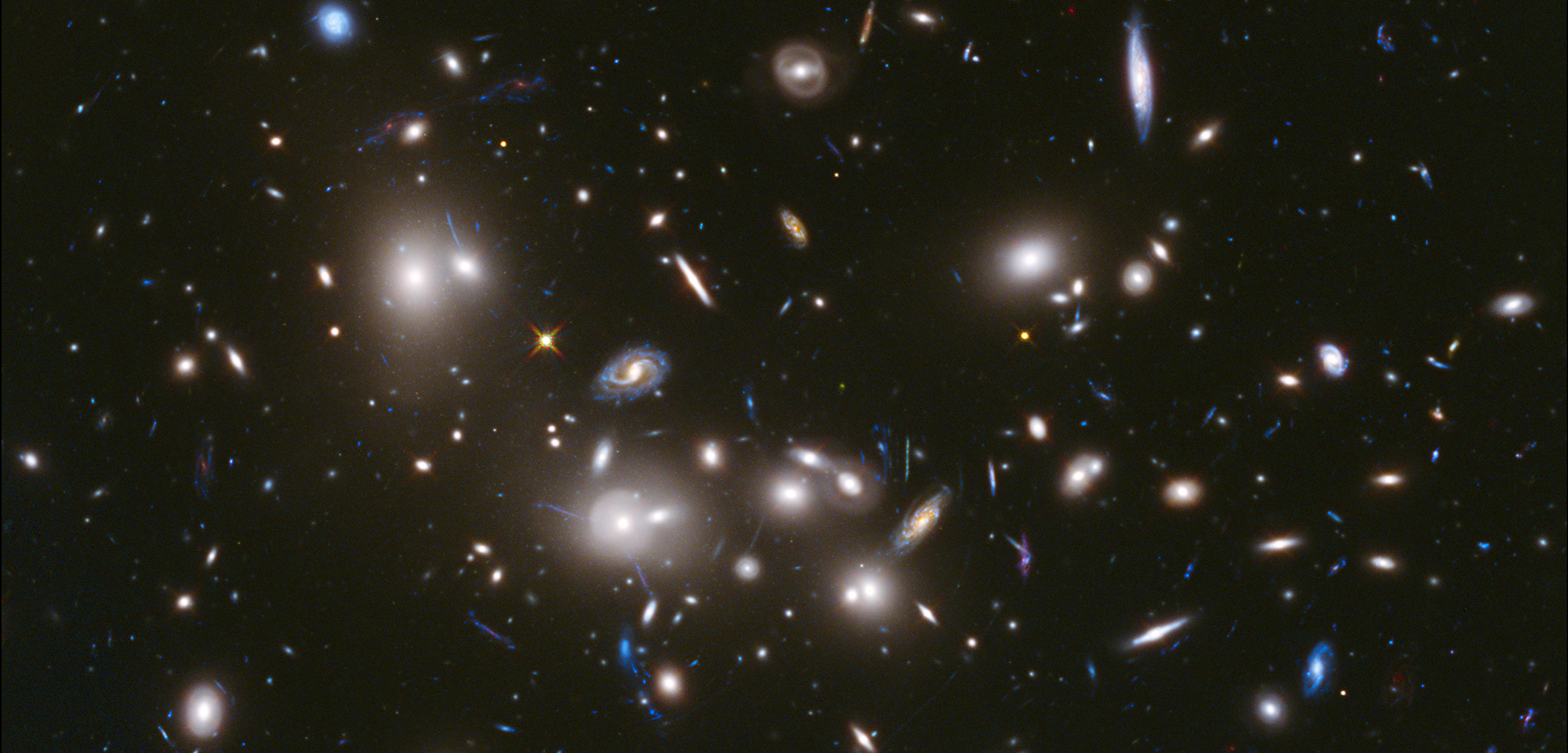1 min read
Abell 2744 Frontier Field

The Frontier Fields program is an ambitious, three-year effort that combines the power of space telescopes with nature's own lenses to peer deeper into the universe than ever before. Hubble, in conjunction with the Spitzer and Chandra space telescopes, is harnessing the phenomenon known as gravitational lensing, by which the gravity of massive clusters of galaxies acts as a natural "zoom lens" in space.
Galaxy clusters are so massive that their gravity deflects light passing through them, magnifying, brightening, and distorting light. Frontier Fields astronomers are exploiting this gravitational lensing by using six separate clusters to magnify the light of very distant galaxies that otherwise would be too faint to see.
Astronomers hope to learn not only what is inside the clusters but also what is beyond them. By unleashing the telescopes' full potential, they are uncovering galaxies that are as much as 100 times fainter than what the three Great Observatories typically can detect. Astronomers anticipate these observations will reveal populations of galaxies that existed when the universe was only a few hundred million years old, and many that have not been seen before.
Hubble's Frontier Fields team uses both the Wide Field Camera 3 (WFC3) and Advanced Camera for Surveys (ACS) in parallel. While one of the telescope's cameras looks at a massive cluster of galaxies, another camera will simultaneously view an adjacent patch of sky. This second region is called a "parallel field" — a seemingly sparse portion of sky that will provide a deep look into the early universe. These parallel fields are nearly as deep as the Hubble Ultra Deep Field. They will show how similar the distant universe looks in different directions.
Hubble will observe each cluster with both the WFC3 and the ACS to obtain both optical and infrared measurements. To get additional deep fields, the telescope will be rotated so that a parallel field is observed by the other instrument. For example, ACS would observe the target galaxy cluster while WFC3 observes the parallel field. This is to allow for complete wavelength coverage in both infrared and visible light for the galaxy cluster and the parallel field.
The first cluster to be completed was Abell 2744, also known as Pandora's Cluster. Located in the constellation Sculptor, the giant galaxy cluster is about 4 million light-years across and has the mass of 4 trillion suns. It appears to be the result of a simultaneous pile-up of at least four separate, smaller galaxy clusters that took place over a span of 350 million years.
If you look carefully at the Hubble image of Abell 2744, you will see a few galaxies that look like duplicates of each other, in a smooth arc. These are actually the same galaxy, revealed in multiple, bent-light paths by the gravitational lens.
Among the first science to come from the Abell 2744 observations involves the faint, ghostly glow of stars ejected from ancient galaxies that were gravitationally ripped apart several billion years ago. Mireia Montes and Ignacio Trujillo of the Instituto de Astrofísica de Canarias (IAC) in Spain made the observation of the scattered stars, which are no longer bound to any one galaxy and drift freely between galaxies in the cluster. The team estimates that the combined light of about 200 billion outcast stars contributes approximately 10 percent of the cluster's brightness.
Another team of international astronomers, led by Adi Zitrin of the California Institute of Technology used the gravitational lensing of Abell 2744 to view one of the farthest, faintest, and smallest galaxies ever seen. The diminutive object is estimated to be more than 13 billion light-years away. This new detection is considered one of the most reliable distance measurements of a galaxy that existed in the early universe.
More data on the remaining clusters is currently being taken, and more fascinating science results are certain to follow. By peering deeper into the universe than ever, the revolutionary Frontier Fields observing program will provide a first glimpse of the universe to be unveiled by the James Webb Space Telescope.
About the Object
- ConstellationConstellationOne of 88 recognized regions of the celestial sphere in which the object appears.Sculptor
- DistanceDistanceThe physical distance from Earth to the astronomical object. Distances within our solar system are usually measured in Astronomical Units (AU). Distances between stars are usually measured in light-years. Interstellar distances can also be measured in parsecs.3.98 billion light-years (1,221 Megaparsecs)
About the Data
- InstrumentInstrumentThe science instrument used to produce the data.ACS/WFC
- FiltersFiltersThe camera filters that were used in the science observations.ACS/WFC: F435W (B), F606W (V), F814W (I); WFC3/IR: F105W (Y), F125W (J), F140W (JH), F160W (H)
Share
Details
Claire Andreoli
NASA’s Goddard Space Flight Center
Greenbelt, Maryland
claire.andreoli@nasa.gov






























